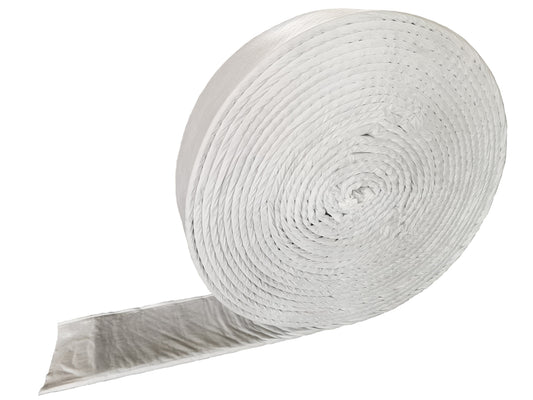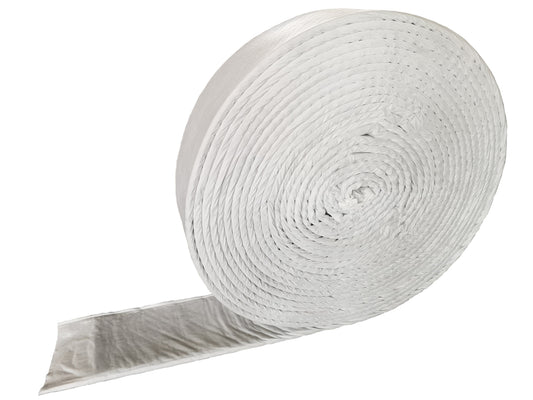-
 Sold out
Sold outInfraDrain25
100/200/300mm x 25mm Strip Drain
Regular price From $300.00 AUDRegular priceUnit price per -
 Sold out
Sold outInfraDrain40
100/200/300mm x 40mm Strip Drain
Regular price From $220.00 AUDRegular priceUnit price per
Why use our Strip Filter Drain?
The most important characteristic of any subsurface drainage system is its ability to collect water from the surrounding soil. Pipe and stone systems have major limitations when compared to InfraDrain® Strip Filter. InfraDrain® has a much greater infiltration area (95%) than competing conventional round or panel type (2.5%) subsurface drainage systems. Panel type strip filters, such as Megaflo, were designed for use as pavement edge drains.
Flexible cuspated strip filter drains are designed to collect significantly more seepage at a lower hydraulic gradient from the surrounding soil than rigid panel strip drains.
The simplicity of the systems allows the use of narrow trench profiles for conventional drainage systems through to very flat projections when used in shotcrete applications or drainage of slopes to improve stability.
When used for shotcrete applications, the high compressive strength of Infra strip drains withstand both installation stresses and to deliver long-term performance. The geotextile coated dimples provide an excellent surface for the adhesion of shotcrete and other construction materials. Reduced shotcrete rebound (up to 20%) compared to rigid, panel type strip drains saves money during spraying.
OTHER BENEFITS OF STRIP DRAINAGE
- Lower installed cost - Combined installation and material cost is usually less than half of that for aggregate drains.
- Easy to handle and install - Lightweight
- Reduces drainage system space requirements
- Strong and durable - Crush strength of core resists damage during installation.
- High flow capacity - Structure of core provides multiple channels for vertical and horizontal water flow. Geotextile filter fabric permits high volume of water into core while restraining soil.
INFRA STRIP DRAIN DATA SHEET
|
PRODUCT GRADE |
InfraDrain40 | ||
|
DIMENSION CHARATERISTICS | |||
|
Product Thickness (mm) |
40 | ||
|
Product Width (mm) |
100 |
200 |
300 |
|
Roll Length (m) |
50 |
50 |
50 |
|
GEOTEXTILE* | |||
|
Polymer |
PET |
PET |
PET |
|
Sonically welded to fully enclose core |
Yes |
Yes |
Yes |
|
Flow (AS3706.9) |
>150l/m2/s | ||
|
CBR (AS3706.1) |
1700N | ||
|
EOS (AS3706.4) |
<0.12mm | ||
|
Strength Class RMS, TMR |
Class A |
Class A |
Class A |
|
Filtration Class RMS, TMR |
All filtration classes |
All filtration classes |
All filtration classes |
|
CUSPATED CORE (DOUBLE DIMPLED) | |||
|
Polymer |
HDPE | ||
|
Compressive Strength (ASTM 1621) |
250 | ||
|
Stiffness RMS Spec. 3557 |
Compliant | ||
|
HYDRAULIC DATA | |||
|
Available Infiltration Area |
>95% | ||
|
Flow Rate (ASTM-4716) |
l/m (both sides) | ||
|
Hydraulic Gradient i=1.0 @ 100kPa |
36 |
72 |
108 |
* RMS R63 requires the geotextile of cuspated strip drains to meet the requirements of Strength Class A, Application Class G3. There is no RMS requirement for the geotextile covering rigid panel strip drains when used for shotcreting


Photo shows the installation of cuspated geocomposite drains prior to shotcreting to intercept seepage and prevent structural failure.
Photo shows the failure of a shotcrete wall when the limited open area of a Megaflo drain was unable to adequately intercept the seepage.
Conformity to rock faces and tunnels
Flexible strip drains conform more closely to the contours of an embankment or tunnel rock face than rigid drains such as Megaflo. This provides better transmission of water into the core and reduced erosion behind the concrete face. A large proportion of the open area is available to collect and transmit seepage into the core.



